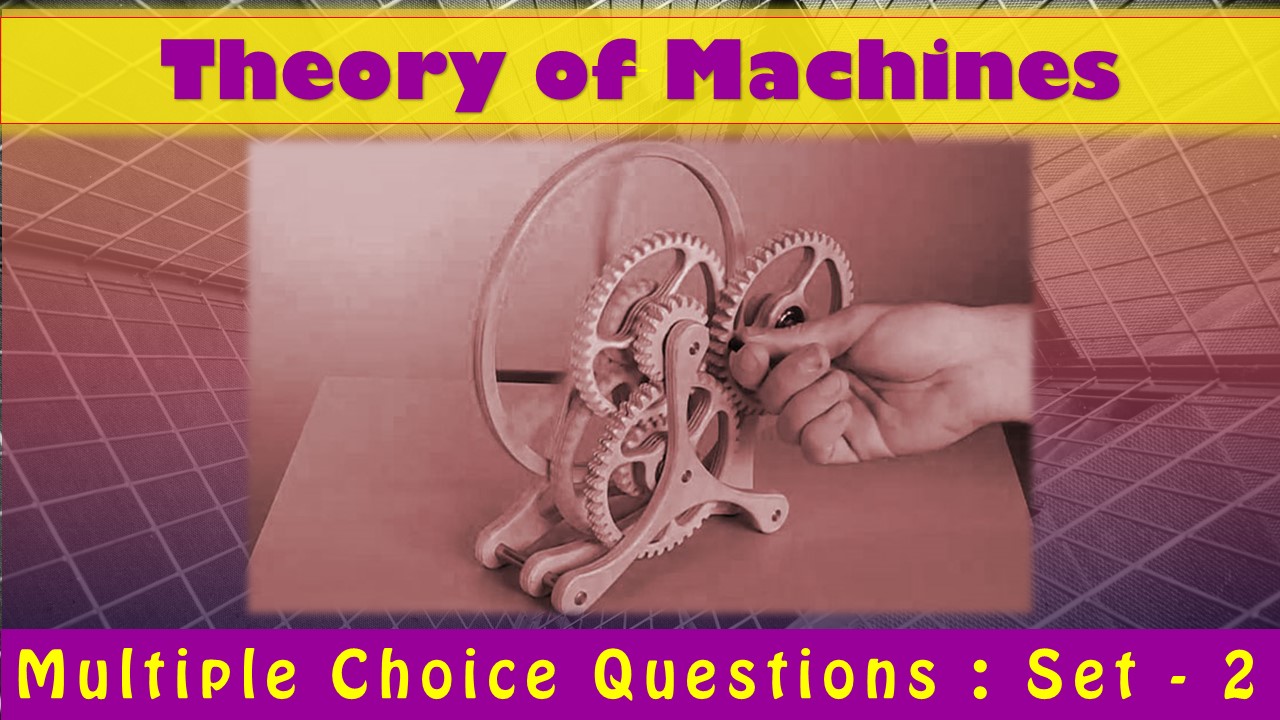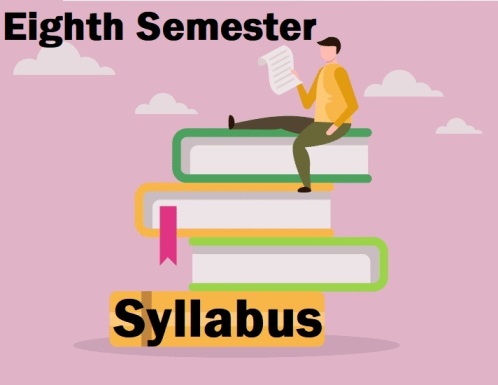MCQ Questions Mechanical Engineering Theory Of Machines
The interviewer is almost as nervous as the candidate in most interviews. You might wonder if you look confident enough, if you will hire the right person, or if you are asking the right engineering interview questions. The last question is arguably the most crucial part to worry about when you’re interviewing candidates.
MCQ Questions Mechanical Engineering Theory Of Machines - Set - 2
Question 1:
If there are L number of links in a mechanism then number of possible inversions is equal to
(a) L + 1
(b) L – 1
(c) L
(d) L + 2
Correct Answer – (C)
Question 2 :
A circular bar moving in a round hole is an example of
(a) incompletely constrained motion
(b) partially constrained motion
(c) completely constrained motion
(d) successfully constrained motion
Correct Answer – (A)
Question 3 :
The example of spherical pair is
(a) bolt and nut
(b) lead screw of a lathe
(c) ball and socket joint
(d) ball bearing and roller bearing
Correct Answer – (C)
Question 4 :
Pitch point on a cam is
(a) any point on pitch curve
(b) the point on cam pitch curve having the maximum pressure angle
(c) any point on pitch circle
(d) the point on cam pitch curve having the minimum pressure angle
Correct Answer – (B)
Question 5 :
A universal joint is an example of
(a) higher pair
(b) lower pair
(c) rolling pair
(d) sliding pair
Correct Answer – (B)
MCQ Questions Mechanical Engineering Theory Of Machines
Question 6:
If some links are connected such that motion between them can take place in more than one direction, it is called
(a) incompletely constrained motion
(b) partially constrained motion
(c) completely constrained motion
(d) successfully constrained motion
Correct Answer – (A)
Question 7:
Cross head and guides form a
(a) lower pair
(b) higher pair
(c) turning pair
(d) sliding pair
Correct Answer – (D)
Question 8:
The values of velocity and acceleration of piston at near dead center for a slider-crank mechanism will be
(a) 0, and more than co2r
(b) 0, and less than coV
(c) 0, 0
(d) cor, 0
Correct Answer – (A)
Question 9:
Rectilinear motion of piston is converted into rotary by
(a) cross head
(b) slider crank
(c) connecting rod
(d) gudgeon pin
Correct Answer – (B)
Question 10:
The purpose of a link is to
(a) transmit motion
(b) guide other links
(c) act as a support
(d) all of the above
Correct Answer – (D)
- NCERT Solutions Class 12 Mathematics RD Sharma Sets : Exercise 1.1
- NCERT Solutions Class 12 Mathematics RD Sharma Sets : Exercise 1.2
- NCERT Solutions Class 12 Mathematics RD Sharma Sets : Exercise 1.3
- NCERT Solutions Class 12 Mathematics RD Sharma Sets : Exercise 1.4
- NCERT Solutions Class 12 Mathematics RD Sharma Trigonometric Functions : Exercise – 5.1
- NCERT Solutions Class 12 Mathematics RD Sharma Trigonometric Functions : Exercise – 5.2
- NCERT Solutions Class 12 Mathematics RD Sharma Trigonometric Functions : Exercise – 5.3
- NCERT Solutions Class 12 Mathematics RD Sharma Quadratic Equations : Exercise – 14.1
- NCERT Solutions Class 12 Mathematics RD Sharma Quadratic Equations : Exercise – 14.2
- NCERT Solutions Class 12 Mathematics RD Sharma Linear Inequations : Exercise – 15.1
- NCERT Solutions Class 12 Mathematics RD Sharma Linear Inequations : Exercise – 15.2
- NCERT Solutions Class 12 Mathematics RD Sharma Linear Inequations : Exercise – 15.3
- NCERT Solutions Class 12 Mathematics RD Sharma Linear Inequations : Exercise – 15.4
- NCERT Solutions Class 12 Mathematics RD Sharma Linear Inequations : Exercise – 15.5
- NCERT Solutions Class 12 Mathematics RD Sharma Linear Inequations : Exercise – 15.6
Multiple Choice Questions for Competitive Exams
- Multiple Choice Questions Class 12 Chemistry The Solid State
Set -1 Set -2 Set -3 Set -4 Set -5 - MCQ Questions Class 12 Solutions With Answers
Set -1 Set -2 Set -3 Set -4 Set -5 - MCQ Questions Class 12 Electrochemistry With Answers
Set -1 Set -2 Set -3 Set -4 Set -5 - MCQ Questions Class 12 Chemical Kinetics With Answers
Set -1 Set -2 Set -3 Set -4 Set -5 - MCQ Questions Class 12 Surface Chemistry With Answers
Set -1 Set -2 Set -3 Set -4 Set -5 - MCQ Questions Class 12 General Principles and Processes of Isolation of Elements With Answers
Set -1 Set -2 Set -3 Set -4 Set -5


